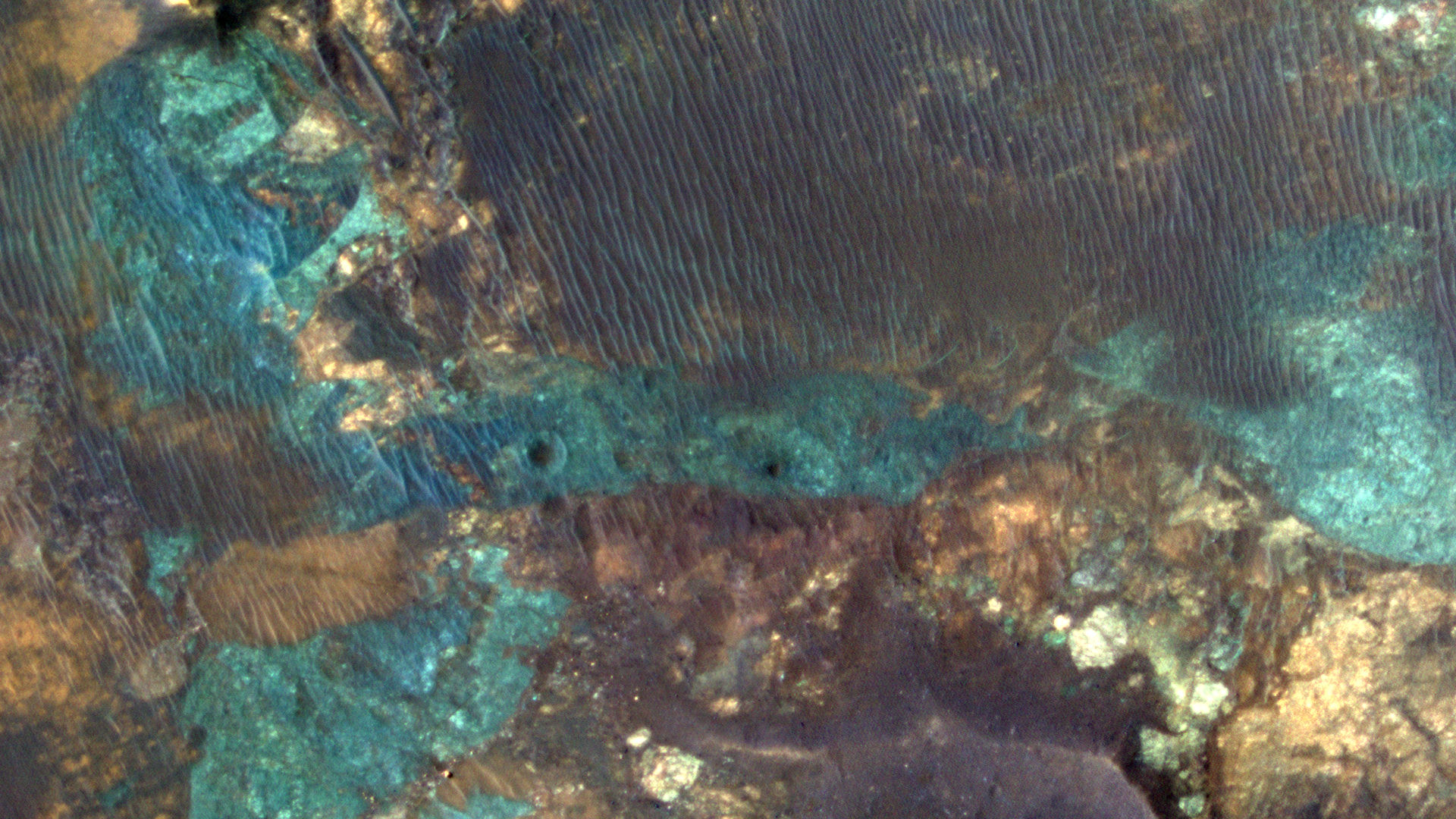How far does the wind blow stuff?

Sizes of worlds
February 25, 2016
Dune shadows
March 16, 2016
A Piece of Mars: Hargrave crater has an amazing array of colorful surfaces, each of which reflects a different type of rock (this scene is 480×270 m or 0.3×0.17 mi). I like the ripples sitting on top of it all; I’ve long thought that much of the material in those ripples hasn’t moved very far from where it originated. Here’s a good example of why. The ripples on the greenish surface have incorporated some local greenish material. The same is true of the tan ripples in the lower left. I’d bet most of this stuff has only moved as far as it took to make the ripple it’s in. (HiRISE ESP_044161_2005 NASA/JPL/Univ. of Arizona)




2 Comments
If the wind transport of locally derived fines has been limited to short distances, that fits very well with the observation that even the smallest sand ripples have moved only slightly just once in the presence of a rover (Gusev 2007). But there’s something implied here too about erosion. In this case wind scour by sand cannot be the agent that erodes the local rock to fines. That must be getting done in some other way, maybe chemically or by temperature cycling. Making local rock into small particles through sand scour alone implies a great amount of sand moving over the site and likely blowing far away. The erosion would proceed very slowly and any new material scoured loose from the rock would be diluted in a necessarily large volume of sand moving through the system. So wind might be the primary agent of erosion on Mars, but not here apparently. Have I missed a possibility or made an error in logic?
Your logic seems sound to me. You’re right – if the bedforms are largely composed of local material, then some process other than abrasion must be breaking up the surface. I see a few possibilities (not sure which is right, or if maybe some combination of all are):
1. The bedforms move very slowly (which seems consistent with other observations of bedforms like these on Mars, which have never been observed to move – although other bedform types do move). It could be that there’s just a patina of local material sitting on top, with the bulk of the interior being some other material. I suspect this is the case, as I don’t see this color correlation everywhere. On the other hand, we don’t really understand these immobile bedforms. They could be lag deposits, remnants of a time when the wind blew more strongly. Still, I’d then expect to see the colors spread out downwind, and that doesn’t happen.
2. Thermal cycling or some process other than aeolian scour, as you suggest, could be the major factor breaking up the underlying bedrock.
3. The underlying bedrock might already be friable sediment, just waiting to be pushed by the wind (perhaps lightly cemented). I think this is the case in Meridiani Planum, but I’m not sure about the location in this image.